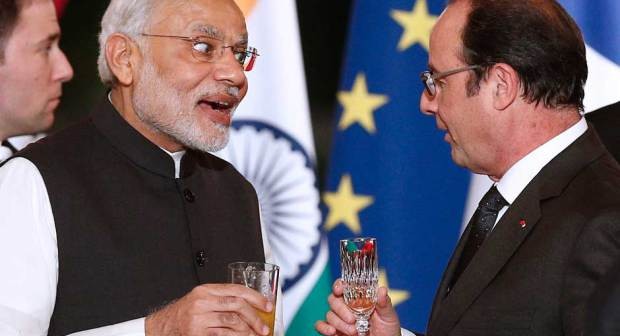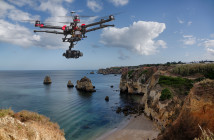The Prime Minister of India is leaving no stone unturned to achieve his vision for a developed and prosperous nation.
With an agenda to attract foreign investment and seek support for the ‘Make in India‘ initiative, PM Narendra Modi took a nine-day trip across three nations.
Starting his journey from France, Modi’s visit is believed to have given a big push to the techno-commercial agreement; to set up six advanced nuclear sectors. This is currently under negotiation.
Next for Modi was Germany. Here, the goal was simply to address an Indo-German Business Summit that took place on the Sunday. Pitching ‘Make in India’, he assured global investors that all possible steps were being taken to ease their Indian business plans. He promised his government is removing unnecessary regulations and simplifying their approach thus welcoming foreign investment.
‘Make in India’ is a popular on-going government initiative encouraging companies to manufacture their products in India. Launched in September 2014, it’s main objective is to focus on 25 sectors of the Indian economy for job creation and skill enhancement. It hopes to increase both GDP growth and tax revenue by aiming at high quality standards ad minimizing impacts on the environment.
How will it help the foreign investors you ask?
A developing country proves to be a cheaper investment in terms of cheap land, employment etc in comparison to a developed country. India happens to be a developing country and one that has previously seen big MNC’s profiting from it. In case you’re wondering why India and not China, India has always been overseen as a less costly option with a distinct talent advantage when compared to it’s rival. One can look at the similar GDP Growth percentage and a vastly different FDI percentage between the two nations in 2003 to spice an investment appetite. China’s GDP growth stood at 9% with $53 billion FDI and India’s GDP growth stood at 8.3% with $4.7 billion FDI, a fraction of China’s FDI. You’re free to wonder what India can just achieve with little bit of investment.
Even before ‘Make in India’ was launched, many foreign policy measures were relaxed or removed. Application for licenses was made available online while the validity was increased to three years; 100% foreign direct investment was allowed in medical devices, railway infrastructure and the telecom sector. The Cabinet of India also allowed 49% FDI in the defence sector among many other changes. It certainly appears win-win for both India and foreign investors.
Today, Modi along with German Chancellor Angela Merkel inaugurated the Indian Pavillion at the Hannover Messe Industrial Trade Fair held in Hannover, Germany. Modi had a meeting with 120 Indian CEO’s and 7 top German CEO’s to discuss a predictable, stable and competitive tax regime for foreign investments. He talked about how the regulatory regime is more transparent and responsive than ever before. The discussion also allowed such investors to directly bring up their experiences with Modi.
These meetings will be followed by intensive talks in Berlin with the Prime Minister heading to Canada tomorrow
If you like this article you may be interested in “Chinese Investment: $20 Bn in Venezuela”.






1 Comment
Hello, Neat post.